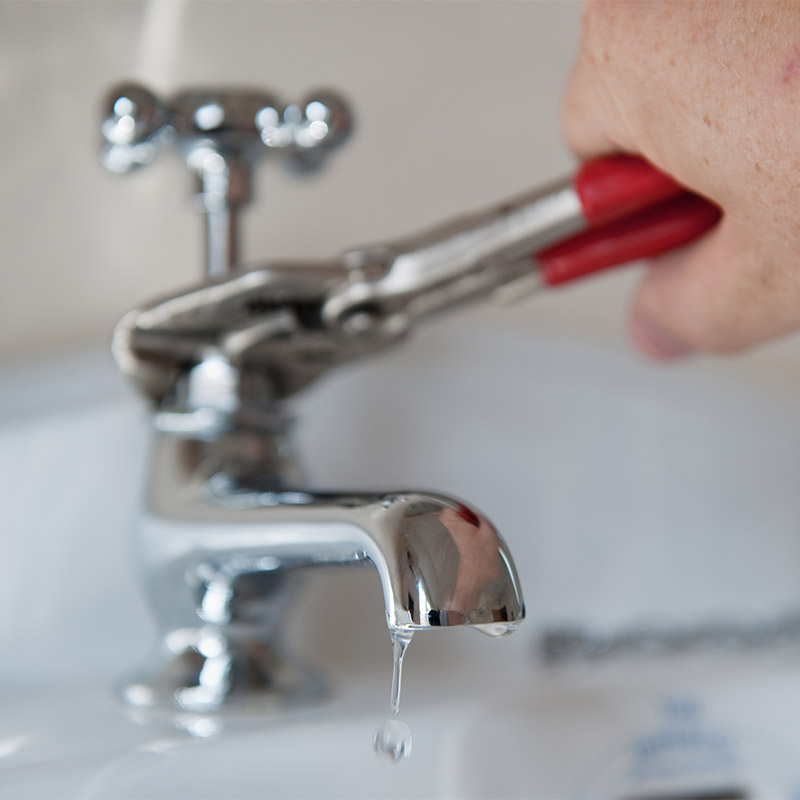What are your insights and beliefs about How to Fix a Dripping or Leaky Faucet ?

Dripping faucets might look like a minor trouble, yet their influence surpasses simply the annoyance of the noise. From wasting water to sustaining unneeded monetary prices and health threats, neglecting a leaking tap can bring about numerous repercussions. In this short article, we'll explore why it's essential to resolve this common family concern without delay and successfully.
Wastage of Water
Environmental Effect
Trickling faucets add considerably to water wastage. According to the Environmental Protection Agency (EPA), a single faucet dripping at one drip per second can lose more than 3,000 gallons of water annually. This not just pressures water resources yet additionally influences communities and wildlife depending on them.
Step-by-Step Guide to Repairing a Dripping Faucet
Tools Called for
Prior to trying to fix a leaking faucet, collect the necessary devices, including an adjustable wrench, screwdrivers, replacement components (such as washing machines or cartridges), and plumber's tape.
Common Faucet Issues and Their Solutions
Recognize the kind of tap and the certain problem causing the drip. Common problems consist of damaged washers, rusty shutoff seats, or malfunctioning O-rings. Refer to maker instructions or on-line tutorials for detailed support on repair work.
Financial Prices
Enhanced Water Costs
Beyond the environmental influence, trickling taps can inflate water costs considerably. The collected waste over time translates right into higher utility expenditures, which could have been avoided with prompt fixings.
Possible Building Damages
Additionally, extended dripping can bring about harm to fixtures and surface areas surrounding the faucet. Water buildup can cause discoloration, corrosion, and even architectural concerns if left neglected, resulting in added fixing expenses.
Health and wellness Issues
Mold and Mildew Growth
The consistent existence of moisture from a trickling tap develops an excellent atmosphere for mold and mold development. These fungi not just jeopardize interior air quality yet also pose wellness risks, particularly for people with respiratory conditions or allergies.
Waterborne Conditions
Stationary water in leaking faucets can end up being a breeding place for microorganisms and various other microorganisms, raising the risk of waterborne illness. Pollutants such as Legionella germs flourish in stationary water, possibly bring about serious ailments when consumed or inhaled.
DIY vs. Expert Repair service
Advantages and disadvantages of DIY Repair Work
While some may try to fix a dripping tap themselves, DIY repairs feature their own collection of obstacles. Without proper understanding and devices, do it yourself attempts can exacerbate the concern or result in insufficient repair services, extending the issue.
Advantages of Hiring an Expert Plumber
Working with a professional plumber ensures that the underlying cause of the dripping tap is resolved effectively. Plumbings possess the knowledge and equipment to diagnose and repair faucet concerns effectively, saving time and lessening the risk of further damages.
Environmental Duty
Private Payment to Preservation
Taking responsibility for dealing with leaking faucets aligns with more comprehensive efforts toward water preservation and ecological sustainability. Every person's actions collectively make a significant impact on protecting valuable resources.
Sustainable Living Practices
By prioritizing timely repairs and adopting water-saving routines, individuals contribute to sustainable living techniques that profit both present and future generations.
Safety nets
Regular Upkeep Tips
To prevent trickling faucets, execute regular maintenance such as cleansing aerators, examining for leaks, and changing damaged parts immediately. Furthermore, think about installing water-saving tools or updating to extra efficient fixtures.
Relevance of Prompt Repair Works
Attending to dripping faucets as quickly as they're discovered avoids further water waste and potential damage, eventually saving both water and cash in the long run.
Impact on Building Value
Perception of Well-Maintained Property
Keeping a building in good condition, including attending to upkeep concerns like dripping faucets, improves its viewed worth and charm amongst prospective buyers or occupants.
Impact on Resale Value
Features with well-kept plumbing components, consisting of faucets, command greater resale values in the property market. Addressing leaking taps can add to a positive impression during property evaluations and settlements.
Verdict
Addressing a dripping tap exceeds mere convenience; it's a crucial action toward saving water, minimizing monetary expenses, and protecting health and home. Whether with DIY repairs or professional aid, doing something about it to fix leaking faucets is a tiny yet impactful way to advertise responsible stewardship of sources and contribute to a much healthier, more lasting future.
How to Fix a Leaky Faucet: Step-by-Step Repair Guide
A leaky faucet may seem like a simple annoyance, but if it's not fixed promptly, that leak could cost hundreds to potentially thousands. From water damage to mold, mildew, and high water bills, even a tiny leak can be catastrophic if left unattended. Damage like this can even affect the overall value of your home, so it's important to take the right approach for leaky faucet repair. You may need the help of a plumber in some cases, but we've got a few tips you can try on how to fix a leaky faucet before calling the pros.
Four Faucet Types
When you're learning how to fix a leaky faucet, the first step is knowing what kind of faucet you're working with! There are four common types.
Cartridge Faucets
Cartridge faucets come in one- or two-handled varieties. In one-handled cartridge faucets, hot and cold water combines in a single cartridge. In the two-handled versions, hot and cold water are controlled separately and mixed in the faucet.
Ball Faucets
Ball faucets have a single lever you push up and down to adjust the pressure and rotate to change the temperature. A slotted metal ball controls the amount of water allowed into the spout.
Compression Washer Faucets
They're the oldest type of faucet, but they're still used in many homes — especially older ones. Compression faucets have two separate handles that, when turned, raise or lower the washer that seals a water valve. This valve stops water from flowing through the faucet when it is turned off.
Disc Faucets
Disc faucets rarely need to be repaired due to their maintenance-free design. The water flow is controlled by two discs — the upper one raises and lowers against a fixed lower disc, creating a watertight seal. If your disc faucet starts leaking, you may need to replace the seals or clean residue buildup from the inlets.
Fixing a Leaky Faucet
Step 1: Turn Off the Water
Whether you're learning how to fix a leaky bathtub faucet or how to fix a leaky kitchen faucet, always turn off the water supply to your working area when you're fixing a leak. The last thing you want is a flood added to your list of things to fix.
Look for the shutoff valves below your sink or around the tub and turn them clockwise to stop the water flow. If your faucet doesn't have shutoff valves, you may need to turn off the water for the whole house. Check to make sure it's off by turning the faucet on. If nothing comes out, you're ready to start the repair.
Step 2: Take Apart the Faucet
How you disassemble your faucet depends on the type of fixture you have. You can use a flathead screwdriver to remove the caps on top of the handle or handles for cartridge and compression faucets. Inside, you should see handle screws. Unscrew these with a screwdriver to remove the handle.
Disc- and ball-style faucets will typically have an inlet screw near the handle, and removing that will reveal the interior of the faucet.
Detach the Valve Stem
For cartridge- and compression-style faucets, you'll see the inner valve stem or cartridge once you remove the faucet handles. If you have a compression faucet, unscrew the brass valve stem. If you have a cartridge faucet, pull out the cartridge. If your cartridge has been in place for a while, it may require some tools or extra force to remove it due to mineral deposits.
Examine and Replace Parts
Once you've removed the parts, check them out to confirm what needs to be replaced. You may see corroded rubber washers, O-rings, stems, or cartridges. On a ball-style faucet, check the seats and springs for damage.
If you need to repair a leaky disc faucet, check the inlet and seals on the lower disc.
Once you determine what parts must be replaced, visit your local hardware store. Bring the damaged parts with you to ensure you can purchase the correct components to replace them.
Clean Valves and Faucet Cavity
If you've removed a stem or cartridge, you may notice mineral buildup in the faucet's threads. Use white vinegar to clean the valve seat by soaking it for a few minutes, then scrub it away with a soft toothbrush and rinse with warm water. You can also clean the interior of the faucet in the same way.
Reassemble the Faucet
Once your faucet is cleaned and the required parts have been replaced, it's time to reassemble it. Put the pieces back together and slowly turn the water supply back on. Doing this slowly is crucial because too much initial water pressure can damage the new hardware you've just installed.
https://homewarranty.firstam.com/blog/how-to-fix-leaky-faucet

As a passionate person who reads on Why Is It Important To Fix Your Leaking Tap/Faucet?, I was thinking sharing that piece of content was worth the trouble. If you please set aside a second to promote this blog if you enjoyed it. Many thanks for your time. Come back soon.
 Alfonso Ribeiro Then & Now!
Alfonso Ribeiro Then & Now! Christina Ricci Then & Now!
Christina Ricci Then & Now! Keshia Knight Pulliam Then & Now!
Keshia Knight Pulliam Then & Now! Barry Watson Then & Now!
Barry Watson Then & Now! Dolly Parton Then & Now!
Dolly Parton Then & Now!